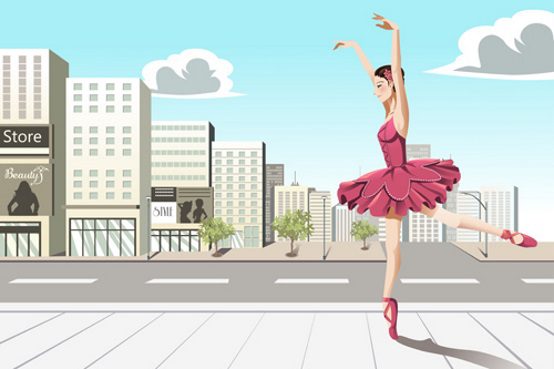‘Smart Growth’ and the Sidewalk Ballet

“All you urbanists look the same to me.”
That, in essence, is the challenge that many advocates of alternative models of development encounter when advocating for our ideas outside of the already converted. That is particularly true on the rightward side of the political spectrum, when talk of walkable communities, mixed-use development, and increasing density is suspected to be soon followed by condescension towards the suburban, hostility towards the car, and a lurking inclination to tear up places that people like well enough already, thank you very much.
And frankly, when built, a lot of our ideas do look the same. We here at New Urbs may prefer some classical touches on our buildings, but the bones of new urbanist neighborhoods will usually look a lot more like Brooklyn than Levittown. How you get there is the worthier part, however, and it is in the thinking behind our living patterns that important distinctions should be firmly drawn. That’s why I was happy to read Chuck Marohn’s recent post, “Please, I’m Not a Smart Growth Advocate“.
“Smart Growth” is one of the catchphrases that often gets thrown in with New Urbanism, traditional neighborhoods, Strong Towns, and the like to refer to a broad swath of urbanist priorities. Indeed, even the venerable James Bacon was willing to claim the mantle of “Smart Growth for Conservatives” at the 2012 Congress for the New Urbanism, in an effort to reclaim those priorities from a uniform liberalism.
Marohn, however, wants no part of the tag. To him, Smart Growth smacks too much of the aforementioned condescension “because, of course, the opposite of smart is dumb. We’ve gone to great lengths here to demonstrate that auto-oriented development, at it’s essence, is anything but dumb and that the people who promote it are rational, and often quite thoughtful. The problem is in the long term trade offs.”
To Marohn and the Strong Towns crew, “we are obsessed by the insolvency of our cities” and “too often I see people and organizations advocating for Smart Growth principles promoting, for example, financially insolvent transit systems as an alternative to financially insolvent highway building. … Or building patterns that meet superficial density metrics even though they do so miles out of town and completely out of context.”
Here at New Urbs, we are obsessed with the unraveling of our communities as they are stretched over frames that cannot support them, much less help nurture them back to health. And too often I’ve seen people and organizations advocating for Smart Growth principles that are satisfied if the density of a development is on-target, and the uses are mixed, that is, if the bones look like they should even if the soul of a place is missing. It does little good to live above a Chipotle if you can never quite get to learning the name of the person on the other side of the counter.
Most of all, Marohn remarks that “way too often I see Smart Growth organizations and advocates distrusting people, natural systems and organic growth in favor of approaches that are centralized and ordered around the ‘right’ set of policies.” That is where the strongest rub lies, what he coins “Robert Moses means to achieve Jane Jacobs ends.”
As hard as it can sometimes seem, given the century of accumulated obstacles from zoning codes and highway construction and more, getting the bones right is the easy part. Given sufficient power, like that New York City master planner Robert Moses wielded, any of us could plant a development in a green field, or infill a decaying neighborhood, and model it in any shape we so desired. We might even be able to sell some people on living there, for a time.
But “Jane Jacobs ends” are intimately wrapped up with democratic, associational means. As important as a properly sized sidewalk is to fostering a walkable neighborhood, Jacobs’ “sidewalk ballet” is comprised of characters living out a neighborly life—the sidewalk is only the stage.
That makes our job a lot harder than if it were merely a matter of construction and coordination. But it makes it more vital as well. As Marohn insists, “I’m not convinced we are any smarter or have any better intentions than the people who used top down interventions to bring us urban renewal, empty pedestrian malls and highways through our neighborhoods.” One of the smartest architects of the 20th century thought this was a good look for Paris, and he sought the power that would let him implement his vision free of local resistance.
Planning has its place. But first we must know ours.
Jonathan Coppage is senior staff editor of The American Conservative. New Urbs is supported by a grant from the Richard H. Driehaus Foundation.